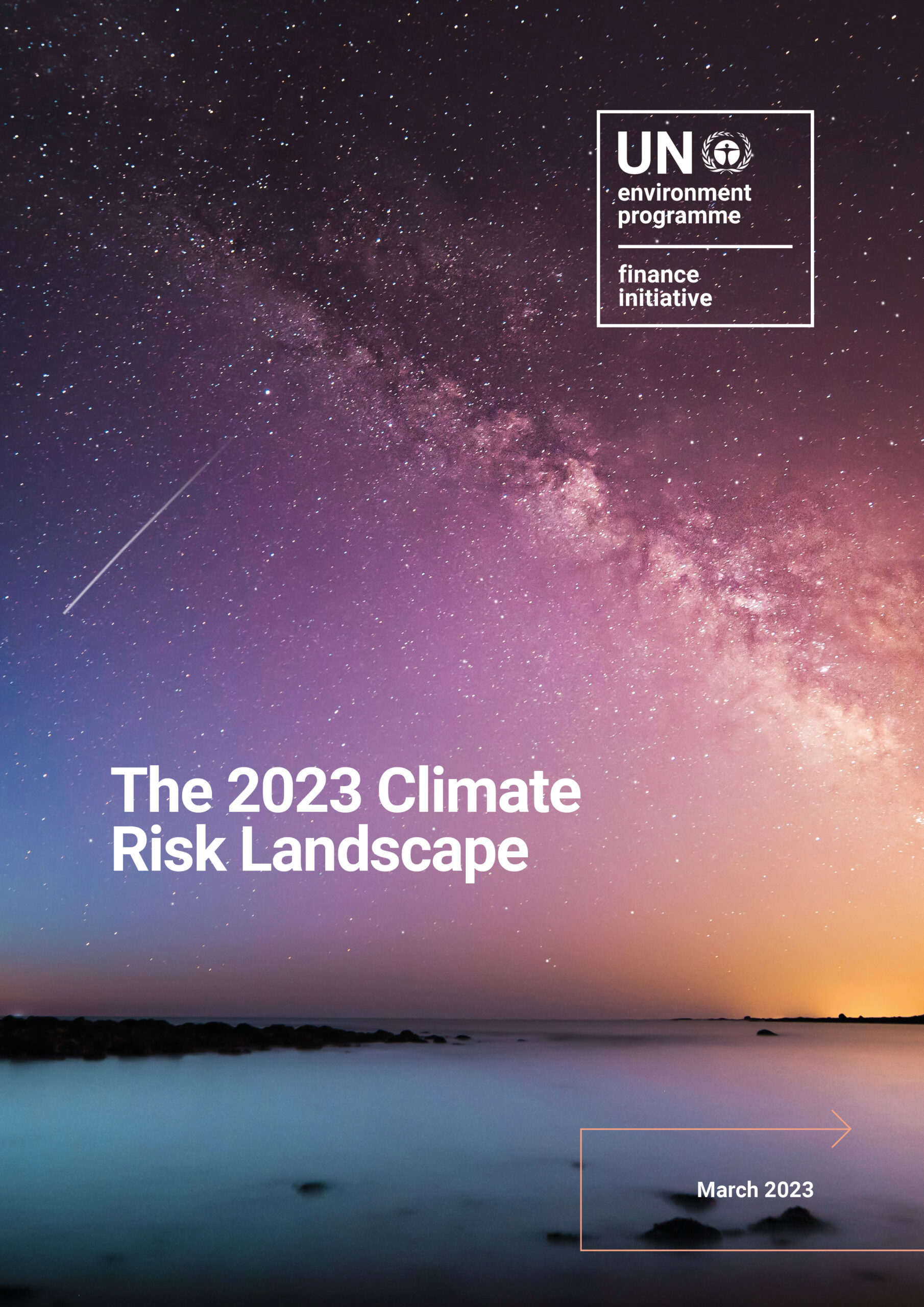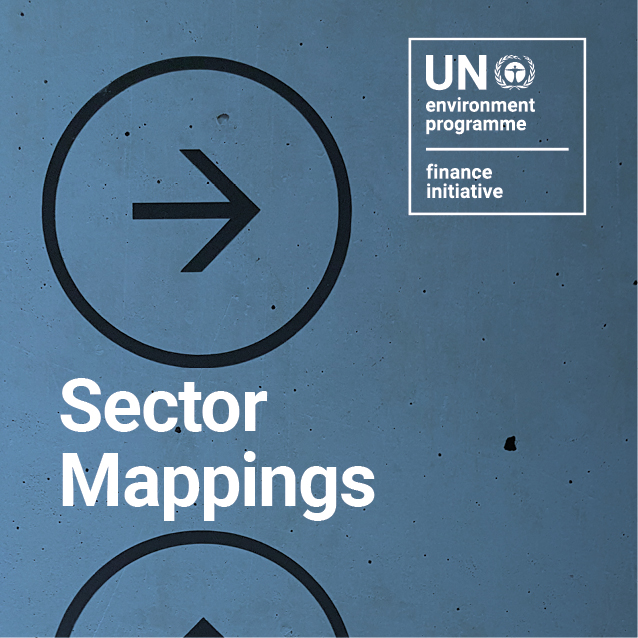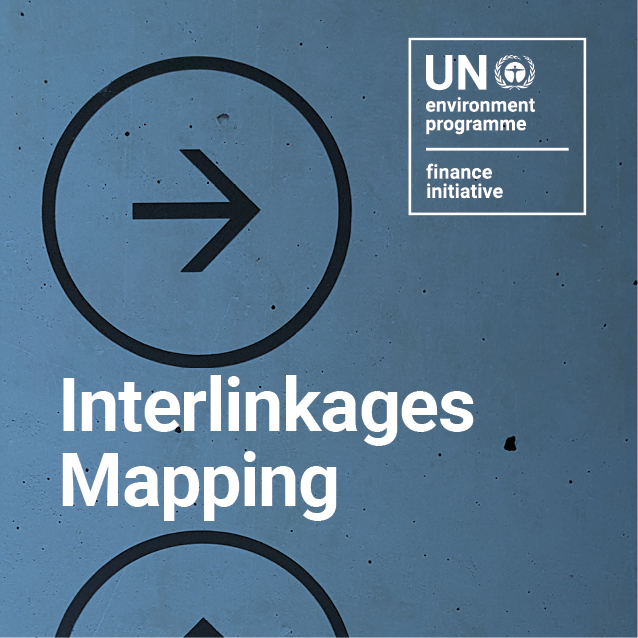In order to perform Impact Management, it is necessary to understand three elements. First, what is the status of ‘needs’ vis a vis the different Impact Areas or Topics. Second, how one’s activities and/or assets may be positively and/or negatively associated with the Impact Areas or Topics. Third, which are the interlinkages between the different Impact Areas or Topics; that is, how taking action on one Impact Area/Topic might positively or negatively affect other Impact Areas/Topics.
The Impact Mappings build on the Impact Radar to make it operational. The Sector Mappings chart the economic sectors and activities of the International Standard Industrial Classification (ISIC) to the different Impact Areas or Topics of the Impact Radar. The Needs Mappings consider the status of needs vis a vis the Impact Areas/Topics. Finally, the Interlinkages Map charts the positive and negative impacts that might result from taking action on a given Impact Area or Topic.
The Impact Mappings were produced as part of the UNEP FI Tools for Holistic Impact Analysis, in which they are embedded. However, they can also be used independently as input to other processes, methodologies and tools.
The Mappings are based on internationally recognized standards and research and have benefitted from early trialling and refinement as part of the ongoing development process of the UNEP FI Impact Analysis Tools. An open and ongoing review process is intended to ensure that the Mappings are of maximum accuracy and hence value to all users.
All Mappings have been updated based on the 2022 revised edition of the Impact Radar.
The Sector Mappings are a set of resources which consider the positive and negative impacts of business sectors and activities on the three pillars of sustainable development, as per the impact areas of the UNEP FI Impact Radar. They include:
- The Sector-Impact Map: a mapping of positive and negative associations between sectors (as per ISIC+)* and the Impact Areas (last updated in February 2024)
* ISIC+ is the ISIC Rev4 list with a number of additions made by over time by successive UNEP FI Impact Analysis Working Groups. - A Key Sectors Map: a mapping of sectors that are key to different Impact Topics (last updated in February 2024)
- Sector Lists & Correspondences: the list of sectors and activities contained in the ISIC+, NACE, NAICS and ANZSIC industry classifications and correspondence tables between these classifications
The Needs Mapping tracks the needs and priorities of over 100 countries across the globe, across the 12 Impact Areas and 38 Impact Topics of the UNEP FI Impact Radar.
The data in the Mapping is compiled from the statistical data sets, research and policy documents of the UN, other International Organisations and reputable academic or civil society organisations. The Mapping is intended to support users with their impact management process. Context analysis – understanding sustainability needs on the ground – is a central feature of UNEP FI’s holistic impact methodology, as outlined in the Impact Protocol for Banks.
In addition to being available as a standalone mapping, the Needs Mapping is embedded in the Context Module of the UNEP FI Portfolio Impact Analysis Tool for Banks. As such, the Mapping is an integral part of the impact management toolkit designed to support signatories to the Principles for Responsible Banking meet their requirements.
The Needs Mapping is updated on a yearly basis.
The Interlinkages Map charts how taking action on one Impact Area or Topic might positively or negatively affect other Impact Areas and Topics (last updated in February 2023).
FAQs
How are the mappings in the Sector-Impact Map put together?
The Sector-Impact Map is built on resources such as the Environmental Health and Safety Guidelines of the International Finance Corporation, UNEP FI’s Risk Briefings, as well as thematic resources such as ENCORE. The Map has also benefitted from the reviews of several specialist organizations (see acknowledgements, such as OECD, Shift & Ellen MacArthur Foundation).
Which sector classification is used in the Sector-Impact Map?
The Sector-Impact Map is based on the UN International Standard Industrial Classification of All Economic Activities (ISIC). ISIC forms the basis from which national industry classification codes have been derived. Correspondence tables between ISIC and most national industry classification codes are available. An automated code converter between ISIC, NACE, NAICS and ANZSIC has been developed by the Frankfurt School of Management and can be accessed here.
What defines a ‘key sector’ within the Sector-Impact Map?
Key sectors are denoted with a “2” within the Map, meaning that the sector is key in driving (key positive) or undermining (key negative) a specific Impact Area/Topic. As an example, the mining sector is a key negative sector for climate emissions, therefore has a “2” under climate stability.
What use-cases is the Sector-Impact Map built for?
The Sector-Impact Map is built as a resource for all use cases, no matter if it is for use by corporates, banks and investors. The Map is a reflection of the commonly associated impacts for each sector under ISIC therefore transferable between different users.
Feedback
Help us to improve the Impact Mappings!
- If you are a bank, please share your user experience and feedback with us
- If you are a topic or impact expert, help us to refine the Mappings
Contacts
- Costanza Ghera, Content Manager – costanza.ghera@un.org
- Alexander Stopp, Content Manager – alexander.stopp@un.org
Copyright © United Nations Environment Programme, 2022
The UNEP FI Impact Mappings and Indicator Library may be reproduced in whole or in part and in any form for non-commercial educational or non-profit purposes without special permission from the copyright holder, provided acknowledgement of the source is made. Please contact the United Nations Environment Programme for a tailored acknowledgment statement. The United Nations Environment Programme would appreciate receiving an electronic copy of any materials (publications, resources, tools) that use all or part of these resources either directly or as a source of inspiration.
No use of the Impact Mappings and Indicator Library may be made for resale or for any other commercial purpose whatsoever without prior permission in writing from the United Nations Environment Programme.
Disclaimer
It is our hope that the Impact Mappings will be a source of inspiration to many organisations as they develop their in-house impact management capabilities and/or any advisory services and products on impact management for third parties.
Any resources, tools, systems, products or services developed based on, referring to or otherwise using the Impact Mappings should acknowledge UNEP FI, however, the results, as well as any associated outcomes and decisions made based on such resources, are exclusively attributable to their developers and their own interpretation of the Impact Radar. In no case may these be assumed to be aligned with UNEP FI’s views and methodologies and/or to have been validated, approved or otherwise certified by UNEP FI.
UNEP FI does not provide advisory services or certification for any resources, tools, systems, products or services developed based on, referring to or otherwise using using the Impact Mappings.




